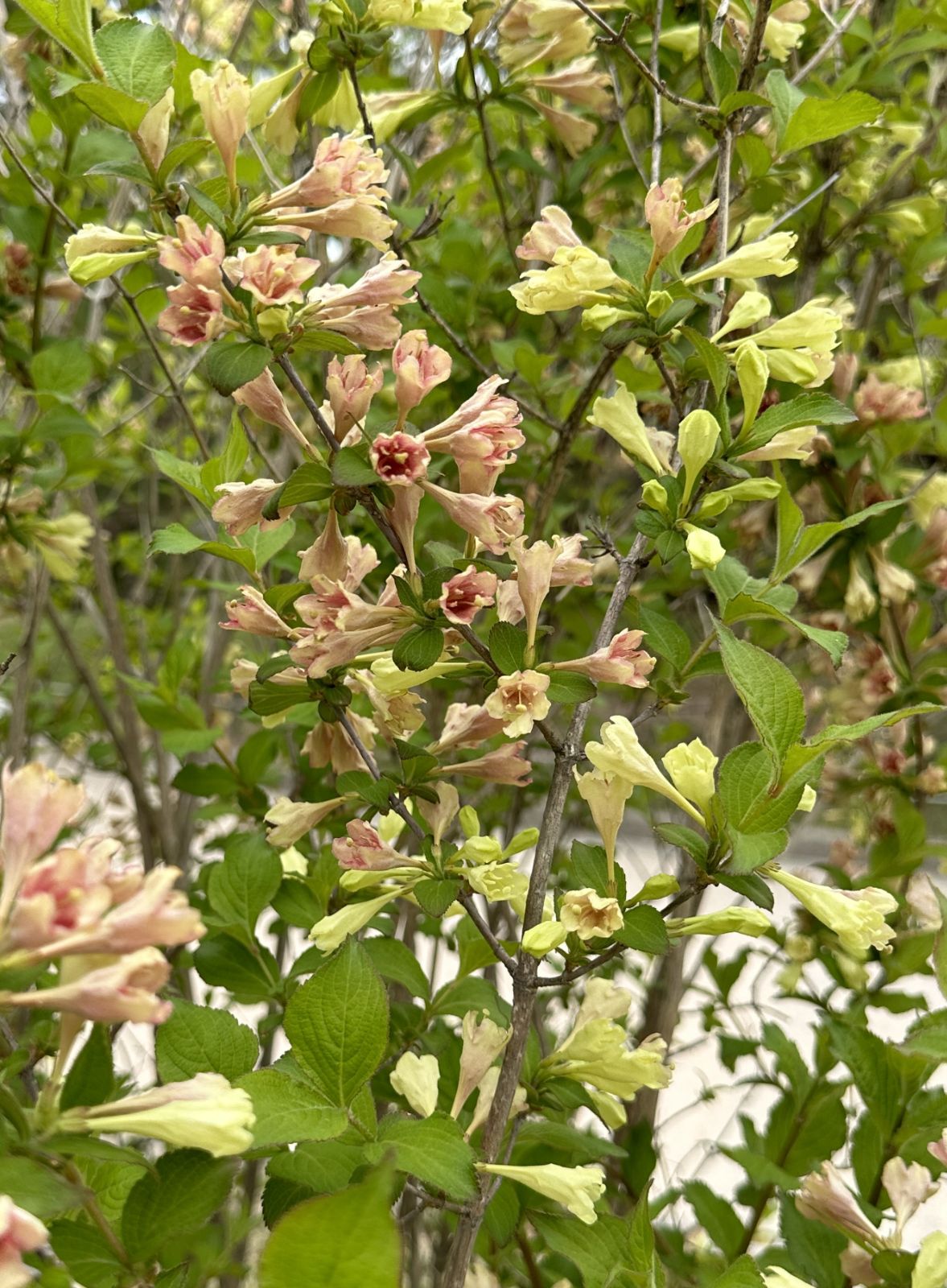Weigela subsessilis
Sponsor
Kindly sponsored by
The Normanby Charitable Trust
Credits
Tom Christian & Alan Elliott (2019)
Recommended citation
Christian, T. & Elliott, A. (2019), 'Weigela subsessilis' from the website Trees and Shrubs Online (treesandshrubsonline.
Genus
Synonyms
- Diervilla subsessilis Nakai
Infraspecifics
Other taxa in genus
- Weigela Aurea Group
- Weigela Bicolor Group
- Weigela coraeensis
- Weigela decora
- Weigela Dwarf Group
- Weigela floribunda
- Weigela florida
- Weigela hortensis
- Weigela japonica
- Weigela maximowiczii
- Weigela middendorffiana
- Weigela Pink-Flowered Group
- Weigela Purpurea Group
- Weigela Red-Flowered Group
- Weigela Variegata Group
- Weigela White-Flowered Group
Shrub to 3 m, branches hairy, with 2 hairy ridges when young. Leaves elliptic, obovate or oblanceolate, 4–12 × 2–5 cm, apex acuminate or acute, base attenuate, margin shallowly serrate, hairy on both sides of leaves, densest on veins, lateral veins 3–6 pairs, petiole absent. Cymes, axillary or terminal on previous year’s growth, 1–3 flowered. Peduncle 1–4 mm, hairy, bracts and, bracteoles linear 1–10 mm, both caducous. Caylx tube 5-lobed, radially symmetric, linear or awl-shaped, free almost entire length, 0.5–1.5 × c. 0.1 cm, hairy. Corolla funnel-shaped, 2.5–4 × 1.5–2.5 cm, gradually widening from the base, green yellow in bud becoming pink to lavender with age, sparsely hairy or glabrous outside. Corolla tube 2–2.5 cm, hairy inside, corolla 5-lobed, radially symmetric, ovate or oblong-ovate, 0.5–0.9 cm long (c. 25–30% of length of corolla tube). Stamen almost as long as corolla, filaments 0.7–1.2 cm, glabrous; anthers, free, linear 0.4–0.6, yellow. Style longer than corolla, 3–4 cm, glabrous, stigma disc-like, 2–3 mm diameter. Fruits cylindrical, slightly curved, 1.7–2.5 cm long, dehiscing from apex, sparsely hairy. Seeds ovoid, 1.5 mm long, narrow wings on three sides. Flowers: May to June. Fruits: September to December. (Lee 2002).
Distribution North Korea South Korea
USDA Hardiness Zone 6-7
RHS Hardiness Rating H6
The Bean Supplement suggested this endemic of the Korean peninsula was probably introduced to western cultivation in 1982, when it was introduced to Kew after being collected on Mount Pukhan, to the northwest of Seoul in South Korea, by Beyer, Erskine and Cowley 206 (Bean 1981). However, the accession 20010598 at the Royal Botanic Garden Edinburgh represents material repropagated from a collection made in South Korea in 1977 (Spongberg & Weaver 451) which, if genuine, may represent an earlier introduction.
Images associated with a more recent introduction, also at Edinburgh (20101713, from GKLY 6, wild-collected in 2010) show a low, spreading shrub of lax growth, with young branches reaching c. 1.2 m before arching, with attractive flowers that are pale carmine-pink in bud, opening to pale purple-pink.
'Canary'
A large growing, early-flowering shrub, to 3 m × 3 m. Soft yellow flowers to 2 cm long × 3 cm wide at the mouth open by late April in southeast Pensylvannia, as the plant is coming into leaf. Unlike the species this selection holds its flower colour, the blooms not fading red as they mature. It was raised from a seed batch sent to Richard Light by the Chollipo Arboretum, South Korea, and selected in about 1994 (Hatch 2018–2020).
This is one of only a handful of cultivars treated directly under a species, and not in one of the eight groups established by Hoffmann (Hoffmann 2008). The UK National Collection at the Sheffield Botanical Gardens lists a 9th group for yellow-flowered cultivars on their website, in which they include W. middendorffiana ‘Mango’, however this was not part of Hoffmann’s classification and is not adopted here. The known provenance of ‘Canary’ enables it to be confidently listed under W. subsessilis.


